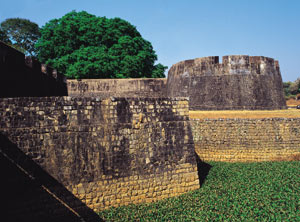|
|
Indianvisit offers complete travel information on Palakkad including the facts on Palakkad, and history of Palakkad
|
|
Palakkad
 |
 Often referred to as the granary of the state of Kerala, Palakkad is one of the favorite tourist destinations in Kerala. A land of valleys, hills, forests, rivers, dams, mountain streams, and irrigation projects, Palakkad is located near the Palghat Gap, a pass through the Western Ghats. Palakkad or Palghat, as the British used to refer it as, is one of the finest among Kerala�s most scenic districts, courtesy, its distinctive palmyra trees and widespread verdant paddy fields.
Often referred to as the granary of the state of Kerala, Palakkad is one of the favorite tourist destinations in Kerala. A land of valleys, hills, forests, rivers, dams, mountain streams, and irrigation projects, Palakkad is located near the Palghat Gap, a pass through the Western Ghats. Palakkad or Palghat, as the British used to refer it as, is one of the finest among Kerala�s most scenic districts, courtesy, its distinctive palmyra trees and widespread verdant paddy fields.
Palakkad has probably the largest mountain pass in the world stretching from 30 to 40 km approximately and separating the two bends of the Western Ghats on the border of Kerala and Tamil Nadu. Rightly known as the Gateway of Kerala, Plaakkad on behalf of the state facilitates access the rest of India. Adversely though, Palakkad, the earlier years, had to face the invasions of the neighboring kingdoms. Palakkad is the center of an assortment of different cultures and ethnic background.
History of Palakkad:
Some are of the opinion that Palakkad derived its name from the combination of two Malayalam words � �Pala� (barren land) and �Kadu� (jungle). Other studies refer to its connection with the ancient Jain temple called �Pali� which again is the sacred language of the Jains. However, most people believe that Palakkad is derived from �Pala�, a native tree that was once found in abundance here and hence the name Palakkad or �the forest of Pala trees�. Having derived its name from the Malayalam words Pala (a tree Alsteria scholar) and Kadu (forest), Palakkad was formerly a beautiful area replete with dense forests strewn with the fragrant flowers of the Pala tree.
Whatever is known about Palakkad�s history, it can be said that it dates back to the Paleolithic period, and numerous megalithic ruins have been found in the area. Starting from the early part of the first millennium AD, and continuing till for several hundred years the Perumals ruled the land. Later their governors who were called Utayavars took control of this land and distributed it among themselves. William Logan, the Scottish author of the Malabar Manual, has observed in his book that one of the bases of the Pallavas of Kanchi who attacked Malabar in the second and third centuries was Palakkad.
However, one of the earliest evidences about Palakkad is the chronicle of a war victory in 988 A.D when Nedumpurayur Nadudayavar, the king of Palakkad, stopped an invasion by the army of the King of Kongunadu at Chittur. Even today, a festival commemorates this victory at Chittur. The Nedumpurayur royal family was afterwards known as Tarur Swaroopam and eventually as Palakkad Raja Swaroopam.
In 1757, to stop the assault of the Zamorin of Calicut, the then Raja of Palakkad sought the help of Hyder Ali of Mysore, who liberated all parts of Palakkad intruded by the Zamorin. In due course, Haider visited Palakkad and later his son Tipu Sultan was the unquestioned ruler of this region. But after his defeat in the hands of the British, Tipu relinquished all his Malabar territories to the British in accordance with the treaty with the English East India Company in 1872. Palakkad formed a division of the Malabar District of the Madras Presidency subsequently.
Log on to www.touristplacesinindia.com which gives online information on the Palakkad on your tour to India.
Next
|